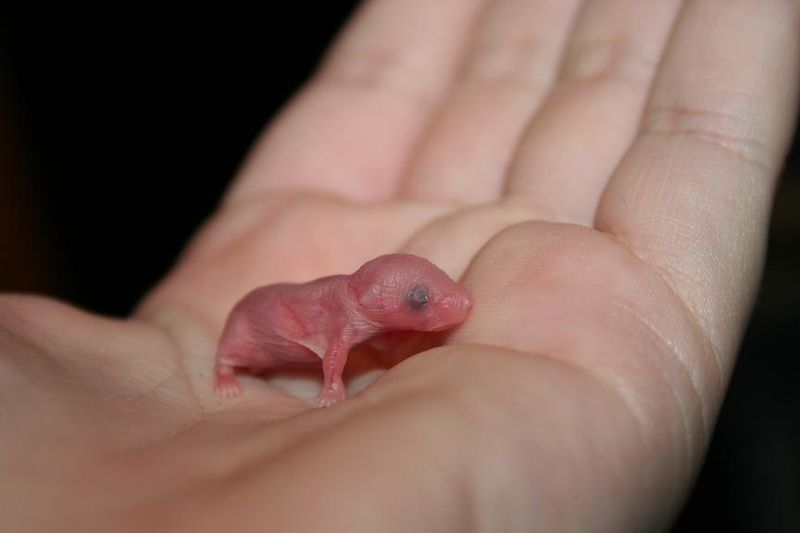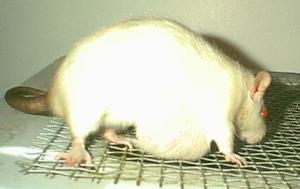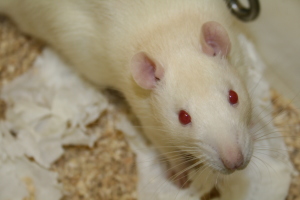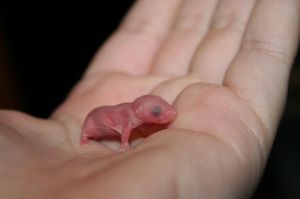Does My Pet Rat Have a Mammary Tumor? Is It Benign or Malignant?

Does My Rat Have A Mammary Tumor?

Mammary tumors in female rats, or does, is quite common. These cysts can grow very large, and will require a small animal veterinarian in many cases.
“Tumor” is a very scary word for us rat lovers, because many of us know how common they are. Even if a new owner has not yet experienced a tumor on their rats, it’s almost sure to happen. Rats develop tumors, both cancerous and noncancerous, at an alarming rate.
Mammary tumors are definitely something to be concerned about, however they are not as serious as other tumors. Mammary tumors do not spread into other tissues, and are usually contained in one area. If you are worried that your fancy rat may have a mammary tumor, it may be time to get her to the vet so that it can be removed!
Benign Tumors Vs. Malignant Tumors In Rats
There are two types of growths: benign growths and malignant growths. When the word “cancer” comes to mind, you are probably immediately thinking of malignant growths and cells. With malignant growths and cancer, the cells will spread to different organs and areas of the body. This is what makes many cancers so incredibly dangerous.
Benign tumors are usually self contained, and they are definitely better news than malignant growths. They do not spread to other areas of the body, and the rat is usually fairly happy and continues on with his or her day as normal; rather than becoming sickly like with malignant growths. Benign tumors can be removed quite easily depending on their location (unless it is located on a vital organ or major blood artery).
What Is a Rat Mammary Tumor and How Do I Treat It?
A mammary tumor is a growth that occurs within the belly, abdomen, groin, or genital area of female rats. It is a tumor that sprouts from the mammary glands. Wherever you see nipples on a female rat is how far its reach can be. Therefore, if a growth occurs on the belly or sides of your female rat, it is quite possibly a mammary tumor.
These tumors tend to be slightly squishy, and will not rupture on their own. Only abscesses in rats will rupture. If this occurs, it’s definitely not a benign mammary tumor; unless it was cut into, and became infected. The tumor will continue to grow, and usually the female rat will just find a way around the tumor. She’ll lug it around with her, surprising you at how well she’s still getting around. Eventually, the growth will start to take its toll on her (using up her resources and energy, as it grows and grows). You may even see it beginning to slowly separate from the body of the rat, becoming a sort of detached ball under the skin.
You cannot treat a mammary tumor by yourself, as it will need to be surgically removed. These tumors have a high risk of coming back after surgical removal, so definitely keep this in mind. Older rats may not benefit from the surgery, as they may pass during or shortly after due to their age. If the rat is more than two years old, it might be better to dismiss the idea of surgery and instead let her live out her life until the need for euthanasia arises.
How Can I Prevent Mammary Cancer & Tumors In Female Pet Rats?

Female fancy rats can avoid mammary tumors in some cases through either breeding or spaying. Breeding will put the mammary system of your doe to use lowering the risk of mammary cysts.
Generally, these tumors arise out of genetics; and rats in general are just susceptible to tumors. There are two major ways that one can help to reduce the risk of mammary tumors in his or her female pet rats:
- Spaying Female Rats: Spaying a female rat will help to reduce the risks of mammary tumors as it helps to lower hormone levels. Hormones are believed to play at least a small role in tumor growth.
- Breeding Female Rats: For some odd reason, it is believed that female rats who have given birth to at least one litter of rat kits will have a better chance of evading cancer of the mammary glands and milk ducts. This is potentially due to the fact that the mammary glands are not put to use until the female rat gives birth and lactates. Perhaps it reduces the risk of genetically mutated cells from developing and reproducing. I personally have found a reduced rate of mammary tumors among does who have been bred at least once.